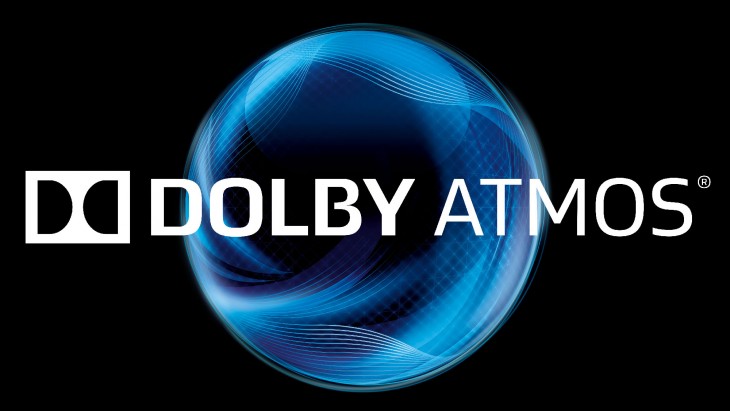

- #DOLBY ATMOS DEMO DISC TORRENT MOVIE#
- #DOLBY ATMOS DEMO DISC TORRENT FULL#
- #DOLBY ATMOS DEMO DISC TORRENT PLUS#
With no proprietary requirements, you can use any standard, off-the-shelf models, as long as they’re full range down to 180 Hz or so, have enough output capability, and have wide dispersion.

Is Your Room NSFC (Not Suitable for Ceiling)?ĭolby recommends using in-ceiling or on-ceiling speakers for the overhead or height channels in most rooms. In other words, 24.1.10, which is starting to look like an IP address rather than a home theater description. It’ll handle playback through systems with up to 24 discrete floor (roughly ear-height) speakers, along with up to 10 overhead speakers. Atmos is incredibly flexible, by the way. If you add another pair of height speakers to the back of that system, it’s now a 5.1.4 system, with the need for two more channels of amplification. You’ll need at least seven channels of amplification (i.e., a 7.1-channel receiver or a seven-channel power amp) to drive everything in a 5.1.2 system but the (likely) powered subwoofer.
#DOLBY ATMOS DEMO DISC TORRENT PLUS#
Therefore, a 5.1-channel system with two front height speakers is written as 5.1.2 to denote the five traditional core channels (front left/right, center, surround left/right) plus a subwoofer (the. Dolby highly recommends using a second pair of height speakers to extend the effect to the back of the room.Ī quick side note on nomenclature: The number of Atmos height speakers a system uses is tacked onto the end of the traditional 5.1 or 7.1 (etc.) designation. At a minimum, you’ll need two of these height speakers in the front part of the room. The additional speakers are the ones that will re-create the “overhead” sound. (You were probably thinking you needed more speakers anyway, right?) The not-good-at-all news is that your existing AVR or pre/pro will likely have to be replaced with one that includes Atmos processing (though some 2014 models are upgradeable now via firmware). The less-than-good news is that you’ll have to add or replace at least two-but preferably four-speakers. The good news is that your current Blu-ray player will most likely be totally compatible if it’s reasonably modern. Of course, you’ll need to make some changes to your home theater (in other words, spend some money) to accommodate Atmos.

#DOLBY ATMOS DEMO DISC TORRENT MOVIE#
(Saying it’s the height of movie sound could be a bit over the top, but only if you don’t like puns.) So what’s the best way to add Atmos to your home theater? Second, each Atmos object is defined by metadata in the soundtrack that describes its position at any given time, which allows an Atmos-equipped A/V receiver or preamp/processor to render best-fit playback based on the number of speaker channels supported in a particular home theater, whether it’s 7, 9, 11, or perhaps (and preferably) even more.įor those who’ve already heard it, Atmos is a significantly uplifting and highly noticeable enhancement over the standard way of doing surround. The Atmos mix of a movie adds the dimension of height, which means that sound effects can now seem to move anywhere within the space that’s head height or above, including directly over you. First, the soundfield-in its original, discretely encoded version, not an extrapolated one-is no longer limited to a two-dimensional plane circling around your ears. Two things are important about its adaptation for home theater. It offers a number of movie extracts that demonstrate the Atmos audio steering capabilities to its fullest.Dolby Atmos, for you members of the unwashed and uninformed masses (yeah, you know who you are), enables film sound designers to treat individual sonic elements as virtual “objects” that can be placed and moved almost anywhere within the three-dimensional space of a movie theater. The reason for wanting an Atmos demo disc is the exact same reason you want a copy of the Chesky Audio Sampler CD. Many of the new releases on Netflix have Atmos soundtracks as do new releases on the Apple iTunes store. Atmos is not just available on physical discs, but most streaming services offer Atmos. Where DD and its variants allow the steering of sound on an horizontal plane, Atmos allows bot horizontal and vertical steering thereby allowing accurate placement of sounds within a 3 dimensional plane.ĭTS:X is a competitor to Atmos which at a high level does the same. Your AVR will detect the soundtrack available on the movie and automatically decode it thereby sending the audio to the correct speaker as the recording engineer intended.ĭolby Atmos differs from standard Dolby Digital. 5.1 or 7.1 or DD or DTS HD-MA, or Atmos or DTS:X etc. Looking at the back of the Blu-ray box will clearly show what type audio encoding was used i.e. Not sure what you mean by "indistinguishable".Īn Atmos soundtrack is only available if it is encoded into the movie's audio mix.


 0 kommentar(er)
0 kommentar(er)
